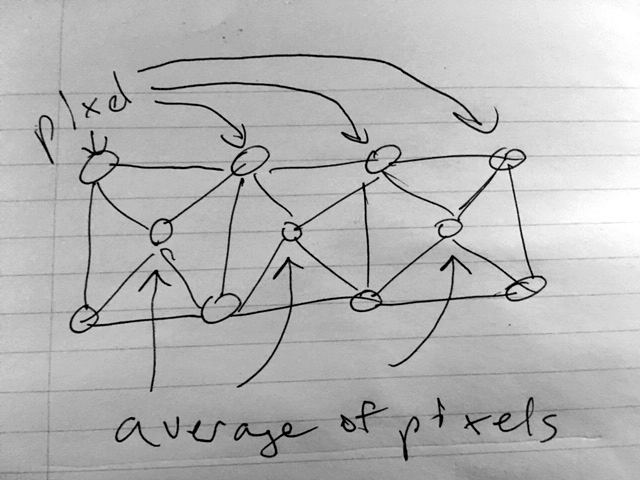This forum is disabled, please visit https://forum.opencv.org
 | 1 | initial version |
I would use a grid of triangles to approximate the surface.

Do you want my code (which will take a while), or do you want to try to code it yourself?
As for display, you will need to pick some kind of graphics library. Why not OpenGL? You can use the very simple OpenGL 1.x code, which doesn't require the use of shaders, or vertex buffers, etc. Along with GLUT, and GLEW, it's practically painless.
 | 2 | No.2 Revision |
I would use a grid of triangles to approximate the surface.

Do you want my code (which will take a while), or do you want to try to code it yourself?
As for display, you will need to pick some kind of graphics library. Why not OpenGL? You can use the very simple OpenGL 1.x code, which doesn't require the use of shaders, or vertex buffers, etc. Along with GLUT, and GLEW, it's practically painless.painless. However, if you insist on going the hardcore way, you can use a math library like GLM to perform the necessary calculations yourself.
 | 3 | No.3 Revision |
I would use a grid of triangles to approximate the surface.

Do you want my code (which will take a while), or do you want to try to code it yourself?
As for display, you will need to pick some kind of graphics library. Why not OpenGL? You On the PC you can use the very simple OpenGL 1.x code, which doesn't require the use of shaders, or vertex buffers, etc. Along with GLUT, and GLEW, it's practically painless. However, if you insist on going the hardcore way, you can use a math library like GLM to perform the necessary calculations yourself.
 | 4 | No.4 Revision |
I would use a grid of triangles to approximate the surface.

Do you want my code (which will take a while), or do you want to try to code it yourself?
As for display, you will need to pick some kind of graphics library. Why not OpenGL? On the PC you can use the very simple OpenGL 1.x code, which doesn't require the use of shaders, or vertex buffers, etc. Along with GLUT, and GLEW, it's practically painless. However, if you insist on going the hardcore way, you can use a math library like GLM to perform the necessary calculations yourself.yourself, like you have to do in OpenGL ES 3.
 | 5 | No.5 Revision |
I would use a grid of triangles to approximate the surface.

Do you want my code (which will take a while), or do you want to try to code it yourself?
As for display, you will need to pick some kind of graphics library. Why not OpenGL? On the PC you can use the very simple OpenGL 1.x code, which doesn't require the use of shaders, or vertex buffers, etc. Along with GLUT, and GLEW, it's practically painless. However, if you insist on going the hardcore way, you can use a math library like GLM to perform the necessary calculations yourself, like you have to do in OpenGL ES 3.2 or higher.
 | 6 | No.6 Revision |
I would use a grid of triangles to approximate the surface.

Do you want my code (which will take a while), or do you want to try to code it yourself?
As for display, you will need to pick some kind of graphics library. Why not OpenGL? On the PC you can use the very simple OpenGL 1.x code, which doesn't require the use of shaders, or vertex buffers, etc. Along with GLUT, and GLEW, it's practically painless. However, if you insist on going the hardcore way, you can use a math library like GLM to perform the necessary calculations yourself, like you have to do in OpenGL ES 2 or higher.higher on the iPhone / Android.